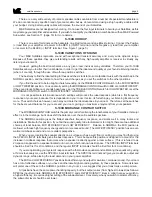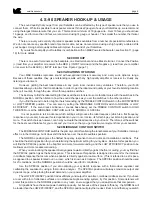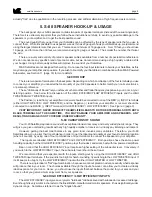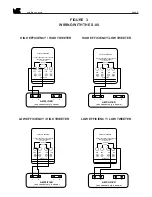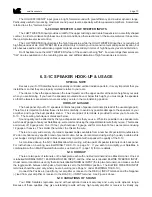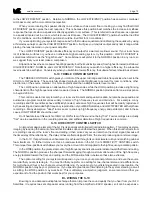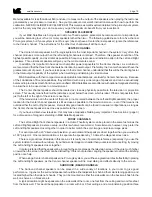
satellite speakers
page 15
in this diagram due to an optical illusion).
Try to follow the formula as close as you can. You can fine tune the placement by listening to a source with an
image (such as a vocalist) centered between the speakers. When listening in stereo (no Center Channel speaker),
move the speakers closer together or farther apart in small increments until you hear the sharpest and most cohesive
image, especially in the phantom center. You may also want to angle (or "toe-in") the speakers slightly. This often
improves the sharpness of the stereo image, reduces room colorations, and provides a wider seating area.
D. CABINET ORIENTATION (HORIZONTAL OR VERTICAL)
The performance of the S-90 or S-80 Satellites is essentially identical whether they are oriented horizontally or
vertically. The performance of the S-100B and S-1C, however, does change according to their orientation.
The S-90 and S-80 cabinets are trapezoidal in shape (their front baffles are narrower than their rear baffles), so
when they are placed on their sides (horizontally), they point down. If your Satellites will be placed above the main
listening position, this should require no compensation. If they are level or below the main listening position, you will
need to put a wedge or spacer underneath the speaker so that it points up towards you.
The S-100B and S-1C Satellites are designed for controlled vertical dispersion and wide horizontal dispersion.
By controlling the vertical dispersion, we limit the amount of sound that would otherwise be reflected with a time delay
from the floor and ceiling (for the reasons discussed in B. above).
For the S-1C Satellites, this means that they should always be vertically oriented (with the tweeters either on the
top or the bottom). When they are vertical, the controlled dispersion is in the correct plane. If they are oriented
horizontally (on their sides), listeners right or left of a direct line from the center of the speaker will hear a compromised
sound quality, an irregular frequency response, and other problems. While this may be acceptable for background
listening, we strongly recommend that you do not place them on their sides for careful listening.
For the S-100B Satellites, the best orientation is with the tweeters in a vertical line, to the outside, so that the 5"
woofers are towards the center. This provides wide horizontal dispersion and limited vertical dispersion, giving you the
best stereo imaging and overall sound. However, the vertical dispersion of the S-100B is not controlled to the degree
of the S-1C, so it is acceptable to place it with the tweeters in a horizontal line either above or below the 5" woofers.
The best S-100B sound, however, is with the tweeters vertical.
8. HOME THEATRE USAGE
TIMBRE-MATCHING
One of the most important factors in achieving excellent Home Theatre performance is known as timbre-matching.
This is important because on film soundtracks, specific sounds are frequently moved from left to right or from front to
back in the room. When the speakers reproducing these sounds do not have similar characteristics, there will be an
audible discontinuity when the sound shifts from one speaker to another.
Timbre-matched speakers have very similar tonal characteristics and sound, which are achieved through three
critical elements: similar or identical drivers; similar or identical crossovers; and similar or identical frequency response.
If you have only M&K speakers in your system, these elements have been addressed and you can be assured that your
system can achieve the full potential of Home Theatre sound.
If your other speakers are not M&Ks, don't worry; M&K's unique Variations of Sound allow you to adjust your M&K
speakers to match your other speakers. Read the Variations of Sound section for your Satellite speakers (S-100B, page
4; S-90, page 6; S-80, page 8; S-1C, page 10) for details.
First, set up a listening comparison between your new M&K speaker and your existing speaker. Connect one
speaker as the front right channel speaker and the other as the front channel left speaker. Place them as close together
as possible, and compare their sound by alternately rotating the balance control fully to the right and left.
Set the controls on the back panel of the M&K speaker so that it sounds as similar as possible to the other speaker.
Set the other M&K speaker identically (unless you are adding just one as a center channel) and proceed with hooking
up your system. If you have any questions, please give us a call and we'll be happy to discuss this with you.
CHANNEL BALANCING
The other factor critical to achieving excellent Home Theatre performance is level-matching the three front and
two surround channels. This is actually even more important than timbre-matching. If your dealer has calibrated your
system on installation, you don't need to worry about this step. We just ask that you PLEASE don't try to readjust it.
But if you are doing the calibration yourself, a small investment will allow you to do the same job as a professional
and get superb surround sound performance. We strongly recommend that you purchase a Radio Shack Sound Level




